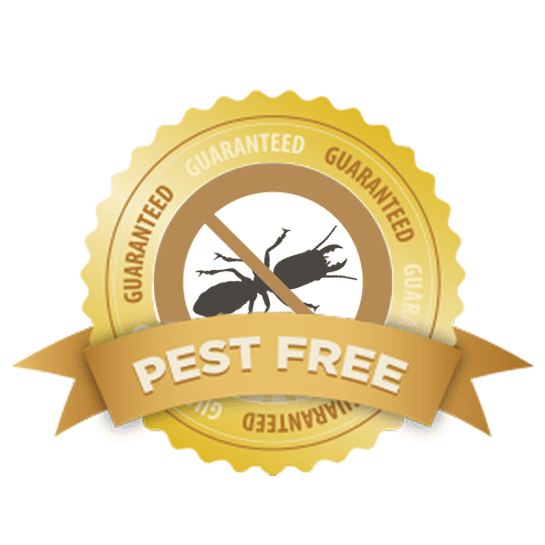A1 Bed Bug Exterminator Charlotte - Specialized Bed Bug Removal
Bed Pest Treatment Malfunction: Contrasting Chemical Vs. Non-Chemical Solutions
In the world of insect control, especially when dealing with the relentless concern of bed bugs, the choice in between chemical and non-chemical therapy remedies can be a critical one. Both approaches supply distinct advantages and disadvantages, affecting aspects such as efficiency, security considerations, and total expense. By taking a look at the nuanced information of each technique, a clearer understanding of which path to seek in dealing with a bed insect infestation can be attained.
Performance of Chemical Treatments
Chemical treatments for bed bug problems have actually been commonly identified for their potent and quick efficiency in eradicating these parasites. When considering the performance of chemical treatments, it is essential to recognize that they can give a fast and extensive option to a bed bug trouble. Expert pest control men usually rely on insecticides to target bed pests at various phases of their life process, consisting of eggs, adults, and nymphs. These chemicals typically work by interrupting the bed bugs' nerve system, bring about paralysis and eventual fatality.
Additionally, chemical therapies have the benefit of supplying residual results, indicating that they can remain to eliminate bed pests even after the initial application. This residual activity is particularly valuable in combating any kind of prospective re-infestations. Furthermore, the fast activity of chemical treatments can bring alleviation to individuals facing severe bed bug problems, allowing them to gain back control of their space swiftly.
Security Worry About Chemical Solutions
One important aspect that requires careful consideration when utilizing chemical options for bed insect therapy is making certain the safety and security of residents and the atmosphere. Exposure to specific chemicals utilized in bed insect treatments can lead to breathing problems, skin inflammation, or various other negative reactions, especially in individuals with pre-existing problems or sensitivities.
Furthermore, the ecological effect of chemical remedies is one more substantial factor to consider. Some chemicals utilized in bed bug treatments might be damaging to useful insects, wild animals, and ecosystems if they leach into the soil or water supply. It is vital to utilize chemical treatments judiciously, adhering to security standards, and considering much less poisonous options to reduce these threats and ensure the secure and reliable monitoring of bed insect invasions.
Benefits of Non-Chemical Strategies
Thinking about the potential safety worries and environmental impact associated with chemical remedies for bed bug therapy, exploring non-chemical techniques provides an appealing option with a number of distinctive advantages. Non-chemical therapies are environmentally friendly, as they do not contribute to air or water air pollution, making them a lasting option for pest control.
Additionally, non-chemical remedies can be reliable in targeting bed insects, including hard-to-reach locations where chemical treatments might not permeate. Techniques such as warmth treatment, vacuuming, vapor cleansing, and bed mattress encasements offer thorough obliteration without the use of damaging chemicals. Furthermore, non-chemical approaches can be much less disruptive, needing minimal preparation and enabling for quicker reentry right into treated locations. On look at these guys the whole, deciding for non-chemical bed bug therapy techniques not just focuses on safety and ecological protection yet additionally guarantees effective and thorough insect control.
Limitations of Non-Chemical Treatments

Additionally, non-chemical therapies usually need numerous applications to attain successful eradication. This can be time-consuming and may not constantly assure total removal of all bed pests and their eggs, especially in hard-to-reach or surprise areas.
In addition, the success of non-chemical treatments heavily relies upon appropriate implementation and thoroughness, which can be testing for individuals without expert know-how. Inadequate application of non-chemical techniques may result in incomplete elimination, leading to consistent invasions and the need for extra therapies.
As a result, while non-chemical therapies have their benefits, it is important to recognize these constraints and consider them when figuring out the most effective technique for handling bed insect infestations.
Expense Contrast: Chemical Vs. Non-Chemical Options
Offered read the article the limitations associated with non-chemical therapies, an important facet to review in the context of bed insect monitoring is the price comparison in between chemical and non-chemical choices. In comparison, non-chemical therapies like warm therapy or heavy steam can be a lot more pricey, with costs ranging from $1,000 to $6,000 for a whole home. While the preliminary cost of chemical treatments may seem lower, several therapies may be needed to fully eradicate the infestation, potentially enhancing the overall cost.
Conclusion

Thinking about the possible safety and security problems and ecological effect try here associated with chemical services for bed bug treatment, exploring non-chemical approaches provides a promising option with a number of distinctive benefits.Provided the constraints connected with non-chemical treatments, an important facet to assess in the context of bed pest administration is the cost contrast between chemical and non-chemical choices. In contrast, non-chemical therapies like warmth treatment or heavy steam can be a lot more expensive, with prices varying from $1,000 to $6,000 for a whole home. While the first expense of chemical therapies might appear reduced, numerous therapies may be needed to fully eliminate the infestation, potentially boosting the overall expense.In verdict, when comparing chemical and non-chemical bed pest treatment choices, it is essential to think about effectiveness, security, advantages, restrictions, and expense.